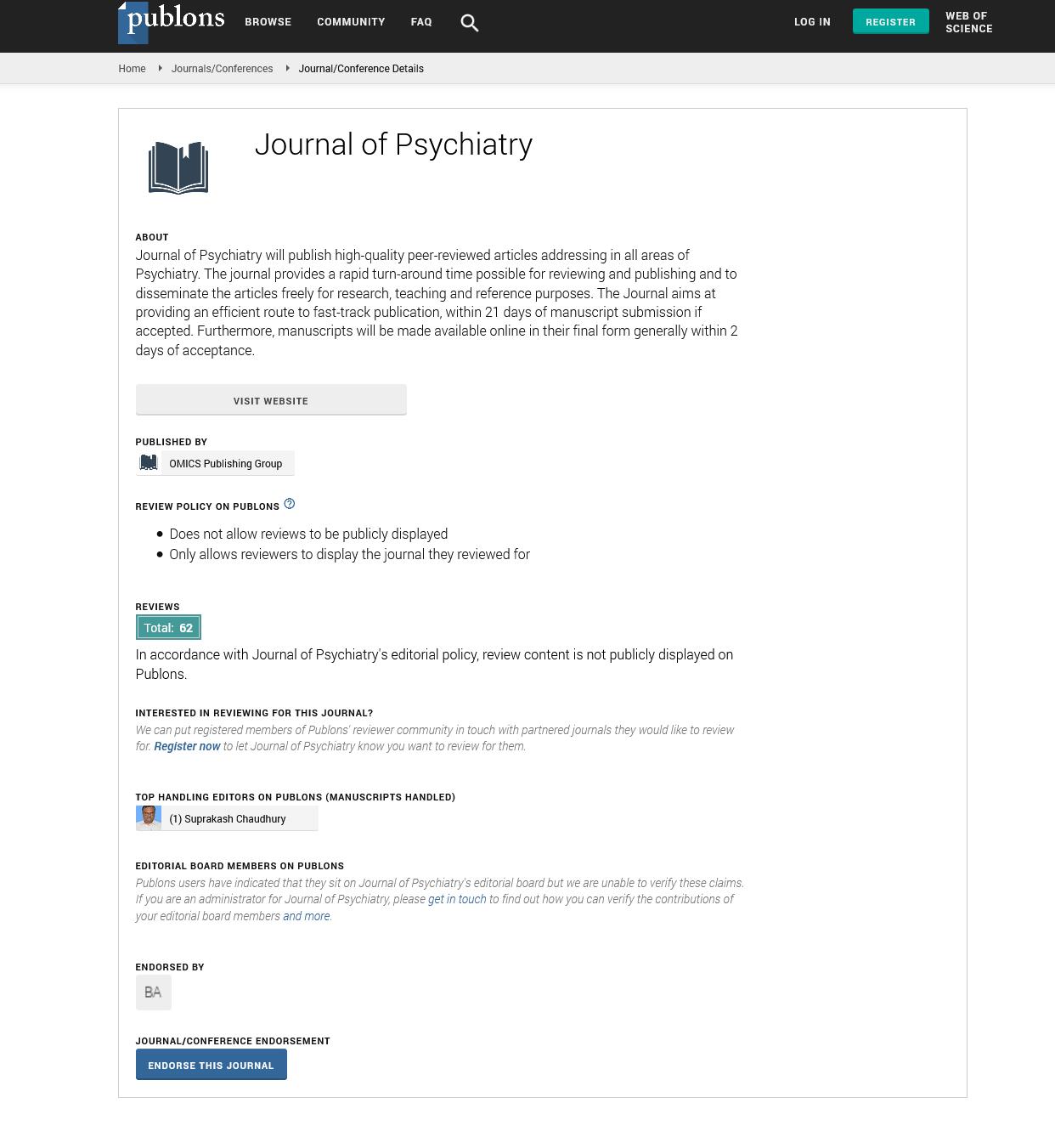Indexed In
- RefSeek
- Hamdard University
- EBSCO A-Z
- OCLC- WorldCat
- SWB online catalog
- Publons
- International committee of medical journals editors (ICMJE)
- Geneva Foundation for Medical Education and Research
Useful Links
Share This Page
Open Access Journals
- Agri and Aquaculture
- Biochemistry
- Bioinformatics & Systems Biology
- Business & Management
- Chemistry
- Clinical Sciences
- Engineering
- Food & Nutrition
- General Science
- Genetics & Molecular Biology
- Immunology & Microbiology
- Medical Sciences
- Neuroscience & Psychology
- Nursing & Health Care
- Pharmaceutical Sciences
Commentary - (2025) Volume 28, Issue 2
Digital Clues to Depression in the Smartphone Age
Haruka Saito*Received: 24-Feb-2025, Manuscript No. JOP-25-28813; Editor assigned: 26-Feb-2025, Pre QC No. JOP-25-28813; Reviewed: 12-Mar-2025, QC No. JOP-25-28813; Revised: 18-Mar-2025, Manuscript No. JOP-25-28813; Published: 26-Mar-2025, DOI: 10.35248/2167-0358.25.28.742
Description
In today's world, smartphones have become an almost constant companion. From messaging and social media to work tasks and entertainment, these devices record an incredible amount of detail about how we live our daily lives. While this might seem like a matter of convenience, researchers have begun to take a closer look at how our phone habits might be connected to mental well-being, particularly signs of depression. Depression often presents in ways that aren’t always obvious. Not everyone who experiences it shows visible signs or reaches out for help. But even when people aren’t openly talking about how they feel, their behavior changes can still be observed in subtle ways. Smartphones, with their continuous presence and data collection, offer a chance to track certain patterns that may be related to a person’s emotional state. One area that has drawn attention is app usage. People who are struggling emotionally might spend more time on social media or stay up late scrolling through content. Others might avoid communication apps altogether, leading to fewer interactions with friends or family. Changes in usage patterns—such as using certain apps much more or less than usual—can sometimes be a signal that someone’s mental state is shifting.
Location data is another point of interest. People who are feeling low often withdraw from their regular routines. They may stay at home more often, avoid social outings, or stop visiting places they used to enjoy. By analyzing movement patterns, researchers can sometimes notice a decrease in physical activity or a limited variety in locations visited, which can suggest a possible decline in mood. Sleep and phone interaction are also closely linked. A person who is awake at unusual hours or checks their phone constantly through the night may be experiencing disrupted sleep, a common symptom in people living with depression. Smartphone sensors can track screen time, number of unlocks and when the device is used, providing insight into daily rhythms. Text messages and call logs, while often protected for privacy, can still be useful when studied in a general way. For instance, a drop in outgoing messages or calls may reflect social withdrawal. In some research settings, language used in messages —when consent is given—has shown certain shifts that are common in depressive thinking, such as negative self-talk or hopeless expressions. It’s not only about collecting information but about seeing the whole picture. A single behavior doesn’t necessarily mean someone is feeling down, but when several changes occur together—like more screen time late at night, fewer messages sent and less travel—it could suggest that the person may not be doing well. These combined signals can help researchers and clinicians understand emotional patterns in a more passive and less invasive way.
While this type of analysis holds great potential, there are also serious questions about how such data is used. People’s private lives are closely tied to their phones and any use of personal information must be handled with care. Informed consent, clear communication and respect for privacy are all necessary in any effort to link digital behavior with mental health. Some wellness apps have begun to incorporate these ideas. They offer users insights into their own behavior and may send reminders or gentle suggestions when patterns point to a possible emotional dip. These tools are not meant to diagnose but to raise awareness, perhaps prompting someone to check in with themselves or reach out to someone they trust. Research in this area is still ongoing and many studies are trying to better understand the relationship between phone usage and mental health. Every individual is different and not all changes in digital behavior are linked to emotional distress. That said, patterns can still be helpful indicators, especially when combined with other knowledge. Smartphones are often seen as a distraction or a source of stress, but they also hold information that, when used responsibly, might help us look after ourselves and those around us. Not everyone will speak openly about how they feel, but the ways we interact with our devices—whether we realize it or not— can say a lot. By paying closer attention to these signals, individuals, researchers and mental health professionals alike may gain a better understanding of when support is needed, offering quiet help in an increasingly digital world.
Citation: Saito H (2025). Digital Clues to Depression in the Smartphone Age. J Psychiatry. 28:742.
Copyright: © 2025 Saito H. This is an open-access article distributed under the terms of the Creative Commons Attribution License, which permits unrestricted use, distribution and reproduction in any medium, provided the original author and source are credited.

